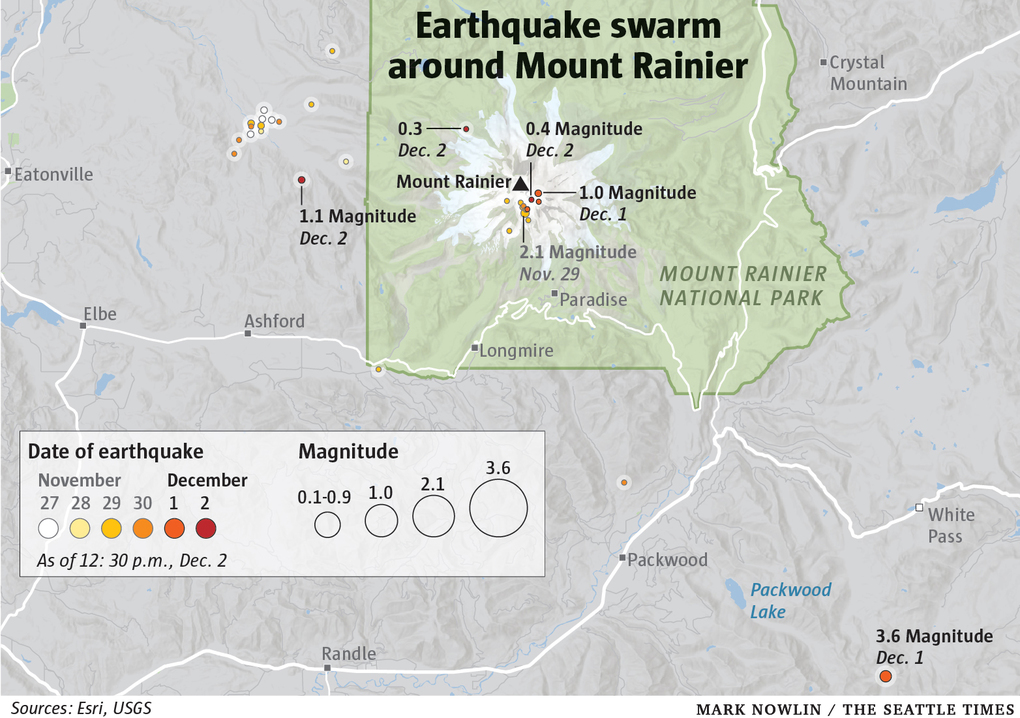After a spurt of seismic activity this weekend, Mount Rainier National Park was shaken by a 3.6 magnitude earthquake Sunday afternoon.
The quake hit at 12:31 p.m. and was felt as far as Kent, nearly 80 miles away.

Since Thanksgiving day, more than a dozen other smaller quakes have shaken Mount Rainier. The largest, until Sunday’s, was a magnitude 1.0.
On Sunday, then, a a very shallow M3.4 quake hit roughly a mile beneath the earth’s surface 13 miles northwest of Packwood.
The mountain generally sees something in the neighborhood of a quake a week. But according to seismologists the weekend tremors weren’t anything out of the ordinary for the earthquake-prone volcano.
These periodic swarms of little earthquakes are indeed quite normal for Mount Rainier.
In other words: No eruption is imminent from the nation’s third most dangerous volcano.
Regardless, people living near Mount Rainier should prepare for what might happen in the event of an eruption. Specifically, an eruption could cause lahars — large volcanic mudflows — to rip down the side of the mountain.
Around 5,000 years ago, the giant Osceola Mudflow, a monster lahar, filled parts of Puget Sound with three cubic kilometers of hot and steamy mud, thus transforming a pristine sea into 200 square miles of new land in a matter of hours.
And the next eruption of Mount Rainier is probably going to trigger an similar catastrophic event. So we all hope that those scientists are sure of what they say: this swarm of earthquake isn’t pointing to the next Mount Rainier eruption and catastrophic lahar. [Seattle Times]












